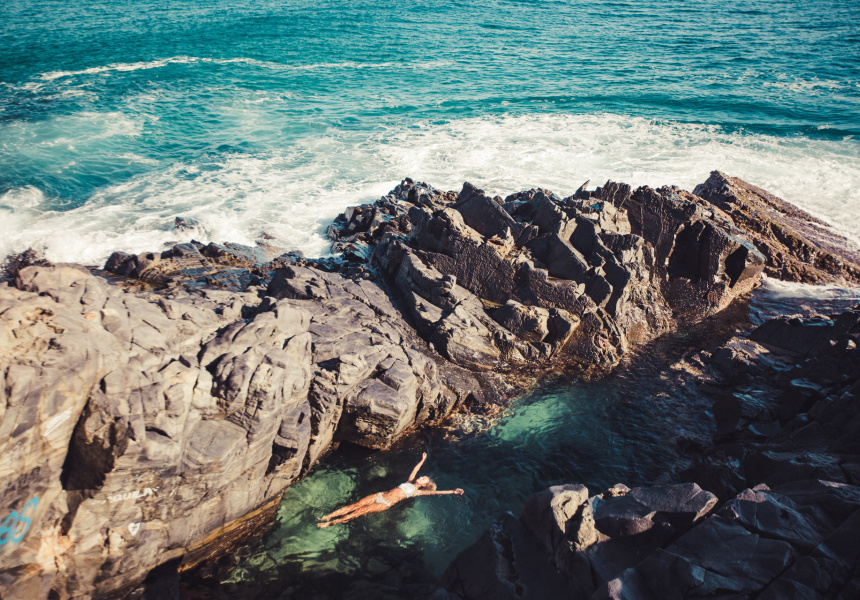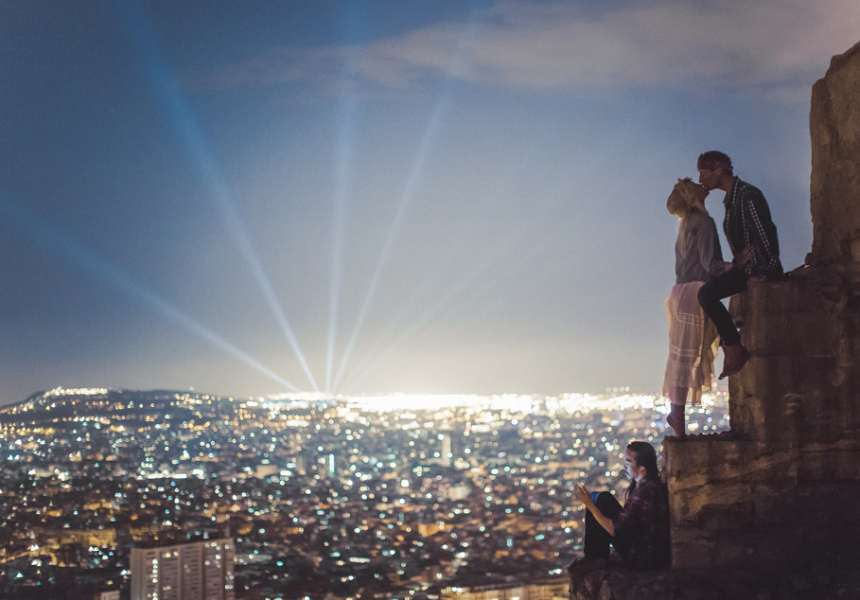“Go that extra YOLO.”
That’s Jarrad Seng’s biggest piece of advice for anyone wanting to up their photography game this summer. The Perth photographer - good mate of musician Passenger and perpetual traveller - has done everything from scale mountains to bribe pilots in his quest for the perfect shot, but he insists that going to those kinds of extremes isn’t (always) necessary to taking great photos. And while his weapon of choice is a Canon SLR, he also believes great results are possible regardless of the technology in your hands.
“The quality of the camera is part of it, for sure, but more of it is about getting yourself in these amazing situations,” he says. “Some of the people who joined me on my Iceland photography workshop asked if they could come even though they had the crappiest cameras. You’ve gotten yourself to the craziest place in the world, you’re going to be okay. It’s about seeking adventure and getting off the beaten track.”
Never miss a Sydney moment. Make sure you're subscribed to our newsletter today.
SUBSCRIBE NOWWhether you’re hitting the festival circuit hard or planning on spending plenty of hours at the beach, summer is a perfect time of year for making – and collecting – memories. Here are Seng’s five tips for making sure your photos do justice to those good times.
Balancing exposure
“The hardest thing about shooting in the harsh Australian summer is balancing a range of exposures in the one shot. Our human eyes are pretty good at interpreting a huge dynamic range of light – someone on the beach with the sun behind them, say – but camera sensors aren’t quite there yet. As a general rule, if the amount of light on the subject doesn’t match the background, you’ll either end up with a nice unintentional silhouette, or a well-exposed face with a blown- out sky. ‘Ain’t nobody got time for that. The solution is to make sure everything in the picture is evenly lit. If shooting in harsh sunlight, the subject needs to be facing the sun too, otherwise, move everything to the shade. If all else fails, convert to black and white and try to play it off as a deliberate artistic choice. That’s what I do.”
Straight lines
“My biggest pet peeve in photography is wonky horizons. It’s something that’s so simple to fix, yet I see it in everything from phone selfies to professional landscape photography. It’s one of those things that, if done well, nobody will ever bring it up, but if someone notices your crooked horizons, you’ve done a bad. Even if all you’re doing is hotdog legs at the beach, if the horizon is in the shot, just do a Daniel Johns and get on board those straight lines. I have no idea what I mean by that reference.”
Zoom with your feet
“Digital zooms on cameras and smartphones are great and all, but they make you lazy. Also, the more you zoom, the worse the picture quality (digital zoom is different to optical zoom). I always encourage new photographers to start out with a prime (fixed focal length) lens, which forces you to physically move if the subject isn’t in the right place. Zoom with your feet, I think they say. And if the point of interest is on the ground, then crouch down to make it the hero of the shot. Don’t be lazy.”
Don’t rush. Take your time to get the shot you want
“Okay, I’m starting to realise that pretty much all my ‘photography tips’ centre around not being lazy, which is pretty rich coming from me (last night I ordered UberEats from a restaurant that was two minutes’ walk away). But when it comes to photography, it seriously pays to take your time. Wait two minutes for that tourist to get out the way. Wait until the sun moves behind the clouds. Take those extra few seconds to style that breakfast flat-lay. Let's be honest, you already look like an idiot so just fully commit and make it worth it.”
Lighting is everything
I’m coming back to lighting here because, in photography, light is everything. Even more so with phone cameras, because you don’t really have any room to mess about in Photoshop. The gap between phone cameras and dedicated cameras is getting smaller every day, but you still have to get everything perfect in the shot. So maybe that means hiking that mountain before sunrise, or catching that late- afternoon glow at the beach. The best way to get the shot is to not only to be there, but to be there at the right time.
Jarrad Seng will be writing about photography for Broadsheet in 2017.



